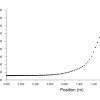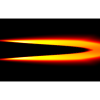Non-premixed Combustion Of Natural Gas CFD Simulation, Numerical Paper Validation
Non-premixed Combustion Of Natural Gas CFD Simulation, Numerical Paper Validation
- Upon ordering this product, you will be provided with a geometry file, a mesh file, and an in-depth Training Video that offers a step-by-step training on the simulation process.
- For any more inquiries regarding the product, please do not hesitate to reach out to us at info@CFDLAND.com or through our online support assistant.
€295.00 Original price was: €295.00.€175.00Current price is: €175.00.
Fuel and oxidizer react individually in the combustion chamber in non-premixed natural gas combustion. Natural gas and air or another oxidizer are fed into the combustion chamber in this mode. Fuel and oxidizers react at high temperatures to produce heat, light, and combustion products like carbon dioxide and water vapour. Understand the dynamics and features of non-premixed natural gas combustion to optimize combustion efficiency, reduce emissions, and ensure safe and effective operation in industrial, residential, and transportation applications.
Based on a paper entitled “ Analysis of the turbulent, non-premixed combustion of natural gas in a cylindrical chamber with and without thermal radiation”, the present CFD simulation is performed. We are going to validate the paper. Figure 5 of the paper depicts temperature distribution along the symmetry line

Simulation Process
The 2D rectangular domain represents the combustion chamber designed in Design Modeler software. Due to its symmetric design, only half of it is modelled to mitigate the computational cost. Then, a structured grid is generated, resulting in 10200 cells.
Five main reactions are taking place during the combustion. Species Transport Model is activated to simulate them, along with Eddy dissipation/Finite rate interaction model. Consequently, the Arrhenius rate factors need to be defined.
Post-processing
Although the mass fraction of each reactant and product is displayed and can be interpreted individually, we are seeking validation of the paper plot. This is why the temperature plot along the centerline is extracted and reported below. The temperature reaches its maximum (nearly 2000K) when it is about 1.4m away from the inlet. Also, the temperature remains approximately constant and it starts growing near the 1.2m position. It is the same for the reference paper. Also, other plots are extracted and can be analyzed.

We pride ourselves on presenting unique products at CFDLAND. We stand out for our scientific rigor and validity. Our products are not based on guesswork or theoretical assumptions like many others. Instead, most of our products are validated using experimental or numerical data from valued scientific journals. Even if direct validation isn’t possible, we build our models and assumptions on the latest research, typically using reference articles to approximate reality.
Yes, we’ll be here . If you have trouble loading files, having technical problems, or have any questions about how to use our products, our technical support team is here to help.
You can load geometry and mesh files, as well as case and data files, using any version of ANSYS Fluent.
€160.00 Original price was: €160.00.€75.00Current price is: €75.00.

€190.00 Original price was: €190.00.€95.00Current price is: €95.00.

€245.00 Original price was: €245.00.€185.00Current price is: €185.00.

€200.00 Original price was: €200.00.€115.00Current price is: €115.00.

€200.00 Original price was: €200.00.€125.00Current price is: €125.00.

€280.00 Original price was: €280.00.€145.00Current price is: €145.00.











































Reviews
There are no reviews yet.